Table of contents of the article
ToggleDowny mildew is a fungal disease that affects lettuce plants and affects the quality of the leaves and the crop. In this article from the “WORLD OF PLANTS” website, we discuss the symptoms of downy mildew in lettuce and effective prevention and control methods.
Cause of downy mildew disease in lettuce
- Fluffy whites in lettuce
- Scientific name: Bremia lactucae
- Type of disease: fungal
- Cause: Bremia lactucae
The fungus is a sporangium with a double branching. The end of each branch is swollen in a layered form, and four appendages called sporangia are formed on this swelling. Each sporangium carries a sporangium sac. The sporangiophores emerge from the stomata on the lower surface of the plant leaf in groups (of 2-3 sporangiophores).
Distribution of downy mildew disease in lettuce
Asia, Africa, North, South and Central America, the Caribbean, Europe, Oceania. It is recorded from Australia, New Caledonia and New Zealand.
The breadwinner
Lettuce and its relatives, including ground artichokes, dandelions, dandelions, and ornamental and wild species in the daisy or sunflower family (Asteraceae). Weeds, earthworms (Senecio), thistle (Sonchus), and dandelions (Taraxacum) are terrestrial hosts.
Suitable conditions for downy mildew in lettuce
The disease appears in lettuce crops under humid climate conditions and low temperatures.
Effect of downy mildew on lettuce
Downy mildew can reduce crop yield and quality. Infected cover leaves must be removed at harvest. Infection on cover leaves or lettuce leaves may result in heads or entire plantings being left in the field. Mild infection may go unnoticed if sporulation occurs only on lower leaves, but infection on cover leaves or lettuce leaves may require abandonment of heads or complete planting in the field. Sporulation can develop after harvest, causing lettuce symptoms to appear on market shelves. Leaf tissue damaged by downy mildew can be an entry site for secondary mold-producing organisms. These rotting organisms may exacerbate crop losses in the field, and can also cause losses later when the lettuce is in transit.
Life cycle of downy mildew in lettuce
Moist, cool conditions and moisture on the leaves are necessary for the pathogen to take root from the moment of lettuce and cause symptoms. The short-lived spore team is recruited by wind. Lettuce grown is the main one but other plants such as currants, cornflowers (Centaurea cyanus) and wheatflowers (Helicrysum bracteatum) are also supplied. Bremia lactococci is a control organism, consisting of multiple genera (pathotypes). All basic data is numbered in both US assets, and numbered separately between the two continents. Currently, 9 races in the United States and 37 races in Europe have been scheduled, but the US races 1-4 and EU races 1-15 are no longer devices or important in this field, so the pre-competition medicine for the US 5- has been announced. 9 European 16-37. However, the pathogen is constantly changing and new races are coming into fashion as the pathogen changes. Within each typical disease, there are some minor isolates of some fungicides. It is not entirely clear whether or not B.lactuae produces more persistent oospores in our region, if it is transported from other growing areas, or serves as seeds.
Downy mildew is spread by spores. They are produced at night and in the morning, when they are released from their spore-bearing stems and blown in the wind to nearby plants and over long distances. Germs do not live for long. For successful infection, the leaves must be wet for 3-4 hours.
Symptoms of downy mildew in lettuce
The disease causes yellowing of leaves in angular spots, as the spots are vein-limited. In red varieties, the initial spots may appear more gray and waterlogged. Under humid conditions, white scale spores form when sporozoites emerge from the stomata and produce spores in distinct white protrusions, as is the case with copper powdery mildew. Spores usually form on the underside of the leaf but can also be seen on the upper leaf surface. Later, the lesions turn brown or brown and papery when the tissue is killed. Older leaves close to the ground are usually the first to show symptoms.
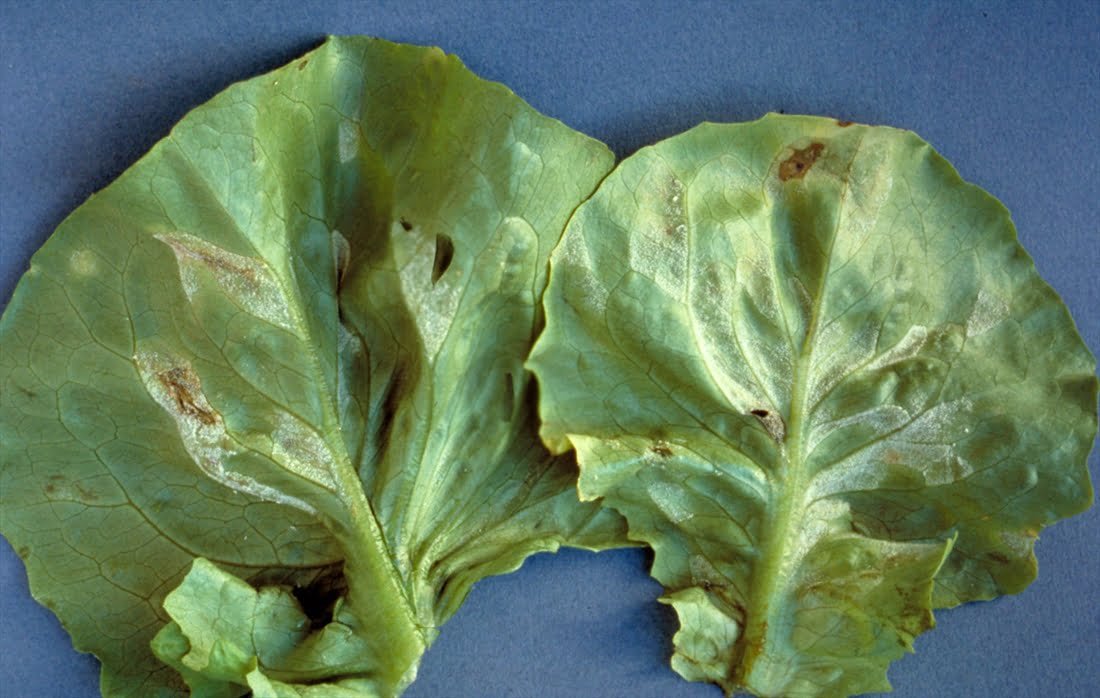
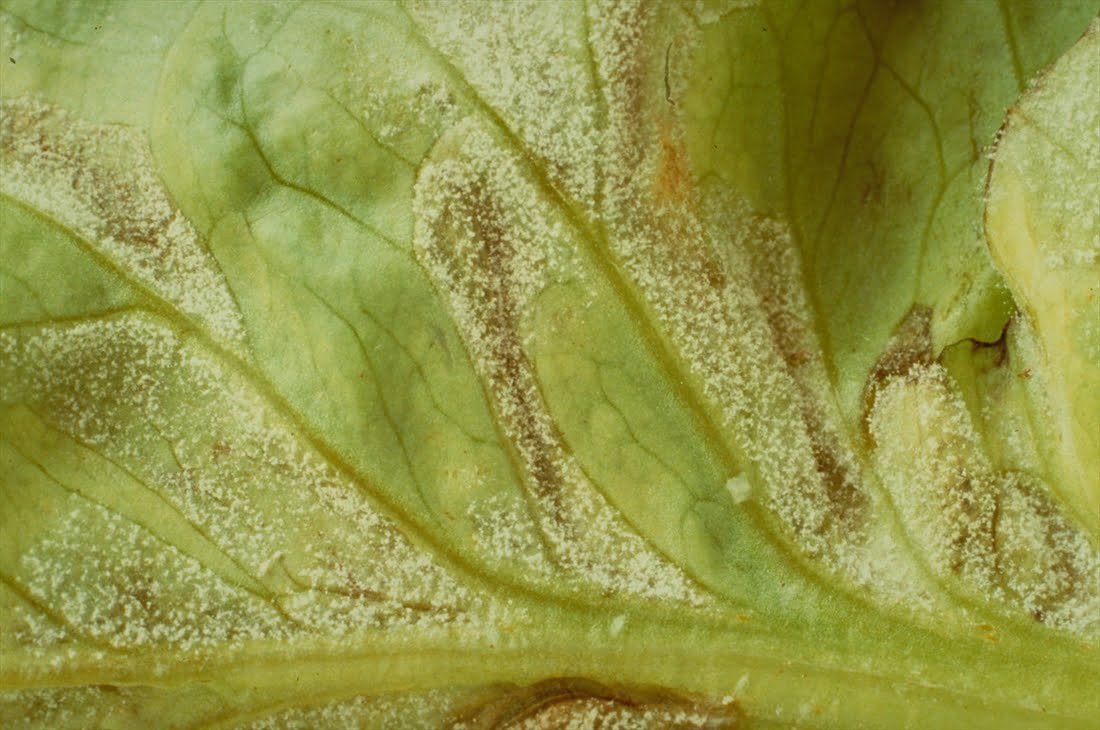
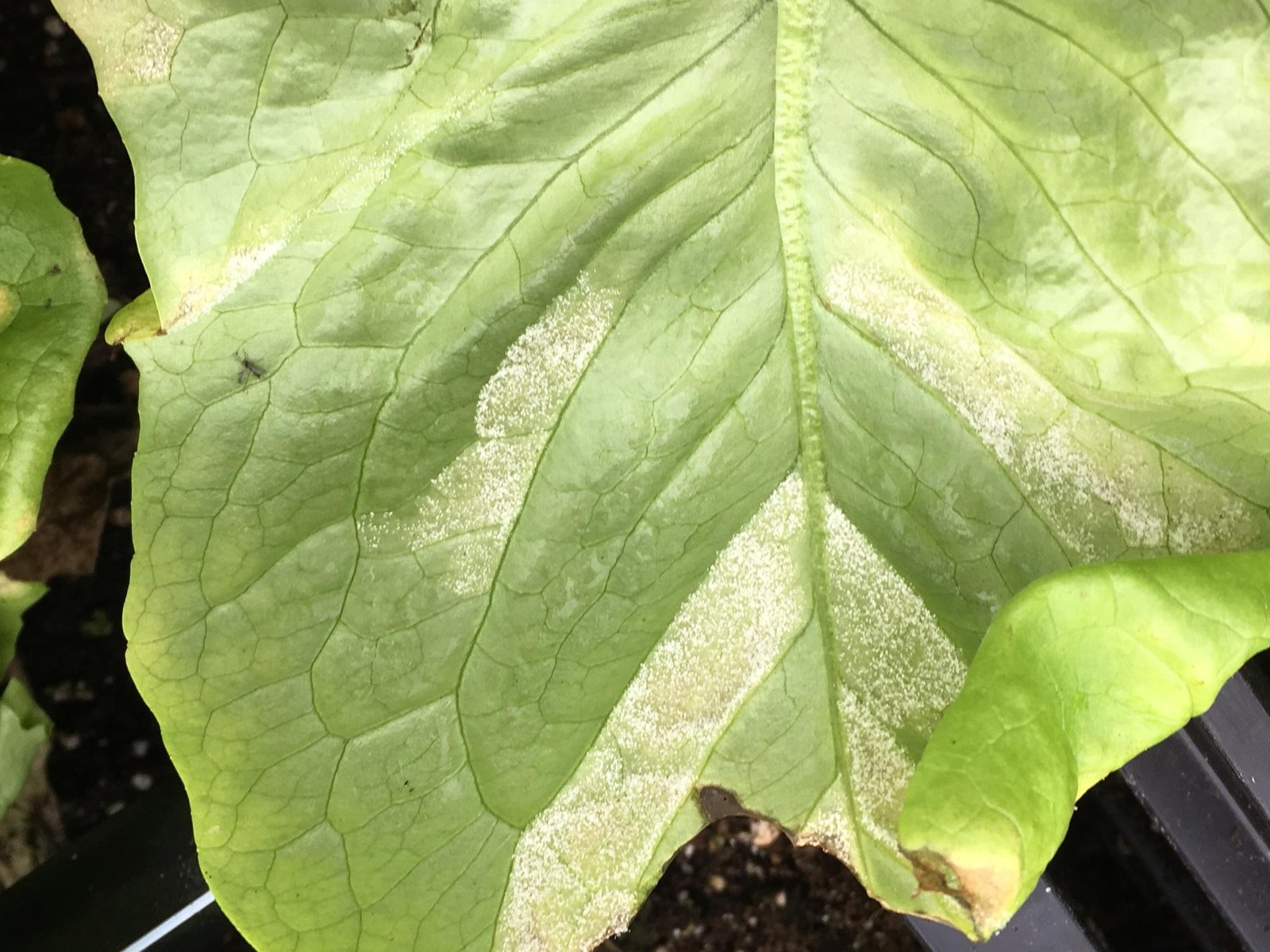
Preventive measures for downy mildew in lettuce
- Cultivation of healthy seeds and non-intensive cultivation.
- Collect and remove infected leaves and plant waste and burn them.
- It is not usually recommended to spray lettuce with fungicides to maintain public health, but when necessary, seedlings can be sprayed with a solution of one of the fungal disinfectants recommended by the Ministry of Agriculture.
- Using resistant varieties such as wild lettuce Lactuca saligna and varieties carrying the Dm gene in areas exposed to moisture. The resistant varieties delay infection and do not prevent it (27). But there is a problem with the emergence of new strains of the disease, which makes resistant varieties susceptible
- Evaluating the risk of the spread of the disease through an early warning project for agricultural pests and spraying, when suitable climatic conditions are available, the preventive pesticide Metiram - Zinc in seedling production centers, and spraying Manib
- Maneb or Mancozeb in production centers
- Remove the outer leaves during harvesting in case of late infection
- Approval of an agricultural course for 3 years
Organic control of downy mildew in lettuce
Planting resistant varieties is the most effective strategy for preventing downy mildew in lettuce. However, selecting the appropriate resistant variety requires knowledge of the pathogen strain(s) present. Planting resistant varieties is the most effective strategy for preventing downy mildew in lettuce. However, selecting the appropriate resistant variety requires knowledge of the pathogen strain(s) present. Resistance to EU and US strains has been reported separately; For example, the major lettuce cultivar “Muir” has been reported to have EU 16-26, 28, 32 and US 5-9 resistances. Because the pathogen is constantly changing and because there are many more pathotypes identified in the European Union than in the United States, the strongest resistance can be achieved by planting lettuce cultivars with resistance to as many pathogenic types as possible in the European Union (although Of the absence of all pathogenic patterns in the European Union in the United States). Resistance to newer pathotypes (e.g., higher numbers) may also provide better and broader protection against newer, unnumbered pathotypes.
Chemical control of downy mildew in lettuce
Many fungicides are prescribed to control downy mildew and can be effective if a spray program is started early, before disease onset when conditions are favourable. Omycetes (such as Tanos, Ranman, Curzate) should be mixed with a broad-spectrum fungicide (such as mancozeb or copper). For organic growers, growers have found that contact fungicides, such as Oxidate or Milstop on a tight spray schedule (no residual activity) are most effective. See the New England Vegetable Management Guide(link is external) for a complete list of registered fungicides. Check labels for pre-harvest periods.
In conclusion, we would like to note that we, at the world of plants website, offer you all the necessary services in the world of plants, we provide all farmers and those interested in plants with three main services::-
- Artificial intelligence consulting service to help you identify diseases that affect plants and how to deal with them.
- Blog about plants, plant diseases and care of various crops ... You are currently browsing one of her articles right now.
- An application that provides agricultural consultations to clients, as well as a service for imaging diseases and knowing their treatment for free – Click to download the Android version from Google Play Store، Click to download the IOS version from the Apple App Store.
References:
- Cappy. 2020. “Breemialactucae (Powdery Mildew of Lettuce).” Abstract of invasive species. Wallingford, UK: CAB International. https://www.cabi.org/Isc/datasheet/9937
- Castoldi, R., H. C. O. Charlot, T. Dalbien, D. M. Melo, A. B. Botelho, and L. T. Braz. 2012. “Identification of new Bremia lactucae strains in lettuce in São Paulo State.” Brazilian Horticulture 30(2): 209-213. https://doi.org/10.1590/S0102-05362012000200005
- Channon, A.G., and Y. Smith. 1970. “Further Studies on the Genera of Bremia Lactucae Rigel.” Horticultural Research 10: 14-19.
- Kroot, I.R. 1992. “From Breeding to Cloning (and Back Again?): A Case Study with Downy White Lettuce.” Anu. Rev. Phytopathol. 30:485-506.
- Datnov, LE, RT Nagata, and RN Raid. 1994. “Pathotyping of Bermia lactocae in Florida.” Plant Pathology 78: 854-857.
- Food and Agriculture Organization of the United Nations (FAO). 2020. “The Organization’s Base.” https://www.fao.org/faostat/en/
- Hochmuth, JJ, Hochmuth RC, W. D. Thomas, and MS Race. 2001. Crop Production – Florida Greenhouse Vegetable Production Guide, Volume I. HS769. Gainesville: University of Florida Institute of Food and Agricultural Sciences. https://edis.ifas.ufl.edu/cv247
- International Premia Evaluation Board (IBEB). 2020. “Premia lactocae.” https://www.worldseed.org/our-work/plant-health/other-initiatives/ibeb/
- Canisiri, R., R. N. Reed, J. Desiger, J. Beuselin, and C. F. Miller. 2020. Chapter Nine. Production of leafy vegetables. In Florida Vegetable Production Handbook, 2020-2021 Edition. HS728. Gainesville: University of Florida Institute of Food and Agricultural Sciences. https://edis.ifas.ufl.edu/cv293
- Lebeda, A., I. Dolezalova, and I. Krystkova. 2007. “Lettuce (Asteraceae; Lactuca spp.).” In Genetic Resources, Chromosomal Engineering and Crop Improvement: Vegetable Crops, Volume 3, edited by R. J. Singh, 377-472. Boca Raton, FL: CRC Press.
- Marin, M. V., C. A. Franco, D. Smilde, R. C. Panizzi, and L. T. Braz. 2020. “Sex Distribution and Virulence Factors of Bremia lactucae in the Major Lettuce Producing Area of Brazil.” J Plant Pathol 102:395–407. https://doi.org/10.1007/s42161-019-00444-x
- Michelmore, R., O. Ochoa, and J. Wong. 2009. “Premia lactucae and Downy-white lettuce.” In Oomycete Genetics and Genomics: Diversity, Interactions and Research Tools, edited by K. Lamour and S. Cmon, 241-262. Hoboken: John Wiley & Sons Inc
- Parra, L., B. Maisonneuve, A. Lebeda, J. Schut, M. Christopoulou, M. Jeuken, L. McHale, M. J. Truco, I. Crute, and R. Michelmore. 2016. “Genetic rationalization for resistance to Bremia lactococci in lettuce.” Ophtica 210: 309-326. https://doi.org/10.1007/s10681-016-1687-1
- Reddy, PP 2016. Sustainable crop protection under protected agriculture. Singapore: Springer. p. 328. https://doi.org/10.1007/978-981-287-952-3
- Schirm, H., and A. H. C. van Bruggen. 1995. “Simultaneous spore release and infection of lettuce with Lactobacillus bacteria during the morning with prolonged leaf moisture.” American Phytopathological Society 85(5): 552-555. https://doi.org/10.1094/Phyto-85-552
- Simcoe, I., Y. Zhou, and M. T. Brandl. 2015. “Powdery mildew enhances colonization of romaine lettuce by Escherichia coli O157:H7 and Salmonella enterica.” BMC Microbiol 15:19. https://doi.org/10.1186/s12866-015-0360-5
- Spring, O., J. Gomez-Zeldon, D. Hadziabdik, R.N. Triggiano, M. Thenes, and A. Lepida. 2018. “Biological characterization and assessment of virulence diversity in pathosystems of economically important oomycetes.” Critical Reviews in Plant Sciences 37(6): 439-495. https://doi.org/10.1080/07352689.2018.1530848
- United States Department of Agriculture (USDA). 2020. “Vegetable Summary 2019.” USDA, National Agricultural Statistics Service.
- Van Treuren, R., A. J. M. van der Arend, and J. W. Schot. 2013. “Distribution of resistance to powdery mildew (Bremialactucae Regel) in the GenBank collection of lettuce and its wild relatives.” Plant Genetic Resources 11(1): 15-25. https://doi.org/10.1017/S1479262111000761


